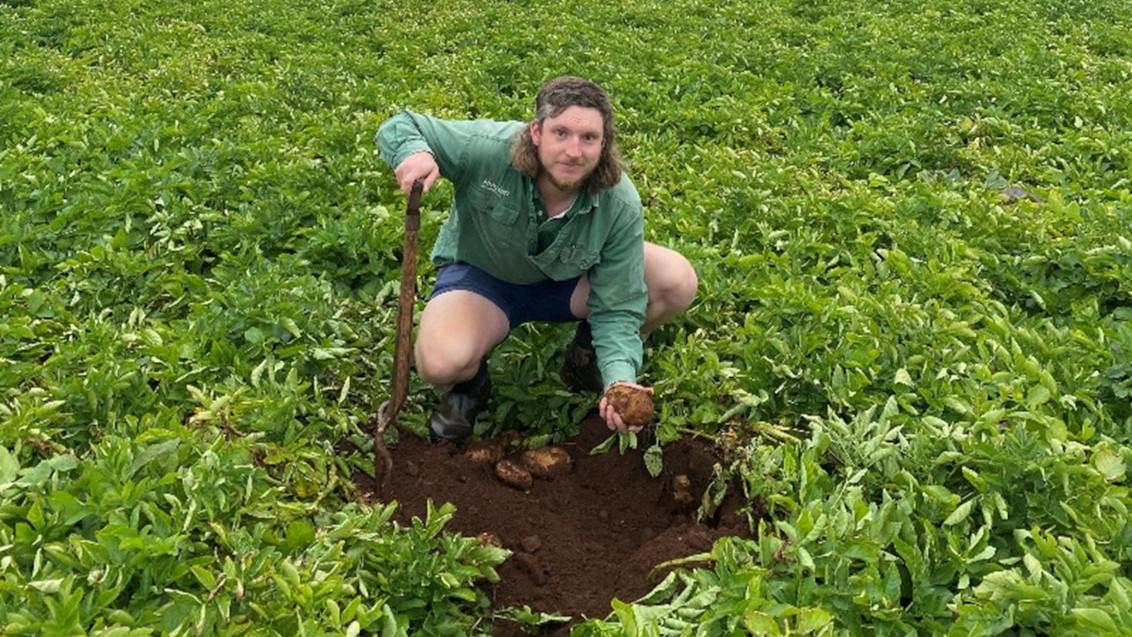From mixed farming to agronomy, with a slight detour in between

Agronomist Jason Taylor from Nutrien Ag Solutions, Youngtown. Photo: Supplied
It was probably no surprise that Jason Taylor became an agronomist.
Raised on a 240 ha mixed cropping and sheep farm near Deloraine, in north west Tasmania, Jason’s passion for agriculture was sown early.
But after completing high school he took a slight detour and began studying naval architecture at the University of Tasmania in Hobart – until he realised it wasn’t his true calling.
After a gap year of general farm work while deciding what to do next, Jason enrolled in a Bachelor of Agricultural Science, which he finished during the COVID-19 pandemic.
“I had a seasonal job that I’d been doing while I was at uni,” he said.
“I kept doing that for another 18 months, until I decided to look for something a bit longer term.”
In October 2022, he secured a trainee position with Nutrien Ag Solutions, at Youngtown, near Launceston, where he has been “ticking away ever since”.
Balancing variety and intensity
In his role as a sales agronomist, Jason works with growers producing a range of horticulture and broadacre crops.
Potatoes are the most intensive of them. Most are processing varieties destined for frozen chips and fries, which are planted in late October and harvested from late March.
“That gets pretty busy over the growing season,” he said.
“Then I fill up the rest of the year with some pasture and some winter cereals. It’s a good bit of variety.”
Jason understands the importance of tailoring his agronomic advice to the specific conditions.
“You’ve got to assess every paddock on its merits and we get a fair bit of variability in soil type and even climate,” he said.
Soil types across Tasmania vary from the fertile, well-drained red soils of the north-west to the more marginal, duplex soils of the Midlands to the south. Strong red soils in the north-east are also usually well-drained, but the weather can be conducive to fungal disease outbreaks.
Vigilance is also important for managing pests such as cut worm, which can attack vulnerable emerging plants, and the larvae of late season potato moth which can spoil tubers.
Expanding knowledge and networks
As a trainee, Jason shadowed senior agronomists for the first few months to watch and learn from them, before gaining the skills and confidence to work independently.
Keen to expand his knowledge and connect with industry professionals, Jason was selected for the inaugural Syngenta Potato Partners Young Agronomist Program in 2024.
Places on the program were offered to 13 potato agronomists with up to three years’ experience who were working at a platinum level Syngenta Potato Partner store in Australia.
Launched in Adelaide with a networking event in June, the program included admission to the World Potato Congress, along with a mix of online webinars and in-person workshops.
During a field trip in August, participants visited the Tasmanian Institute of Agriculture’s Forthside Research Farm at Elliott, south west of Burnie, for crop assessments, and toured processing facilities in the state’s north.
The program offered insights into potato seed production, chemical application techniques – including a useful side by side comparison of a drone sprayer and ground rig with different spray nozzles and adjuvant types, – and other aspects of potato agronomy.
Jason said he particularly appreciated the exposure to diverse perspectives.
“It’s always good to get a differing opinion,” he said.
“I know I’ve got a lot of people to draw on within Nutrien, but you always learn something new from other people.”
Challenges and opportunities
Jason identified disease management, soil health and reliance on a single variety as the Tasmanian potato industry’s main challenges.
A combination of preventative programs and careful rotations – allowing for intervals of five to eight years between potato crops – is usually effective for controlling soil-borne disease, but soils can become degraded on farms where potatoes have been grown for many years.
Despite these challenges, Jason said there were opportunities for innovation and improvement, with growers trialling Barossa as a potential replacement for the staple variety, Russet Burbank. This makes potato agronomy an interesting and fulfilling career.
“It’s a big input, big output sort of crop,” Jason said.
“There’s not a lot of crops where we’re pulling 60 to 70 tonnes of product out of a paddock.
“When I started, and I believe it now, I was told you really need almost four or five seasons under your belt to feel like you’ve seen most things.
“There’s still things I’m picking up every day that I haven’t seen before. That’s part of the gig we’re in, I guess. Nothing’s ever quite the same.”
The inaugural Potato Young Agronomist Program operated during the 2024-2025 growing season, with events timed to align with the crop cycle.
This article appeared at syngenta.com.au
